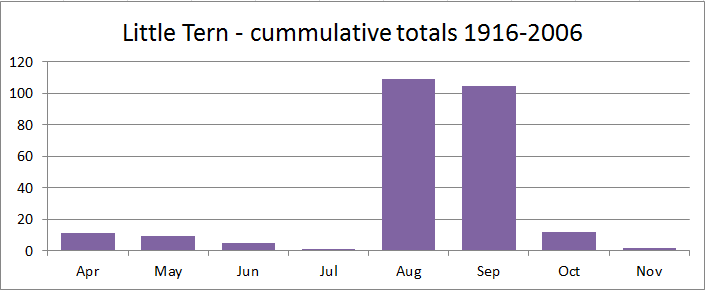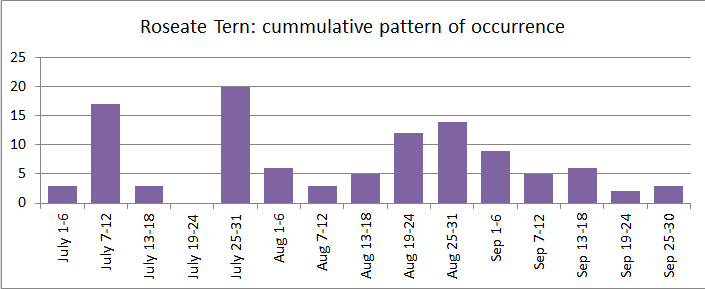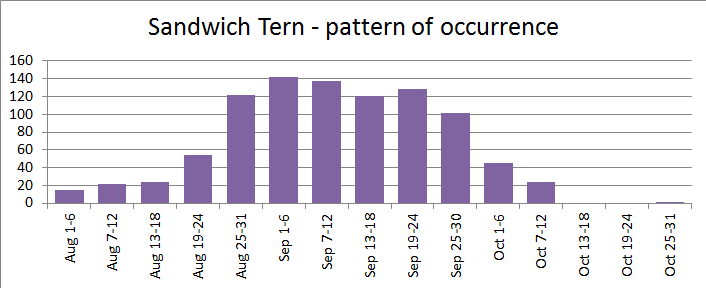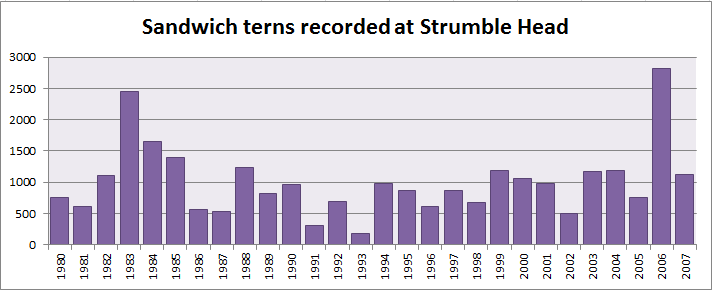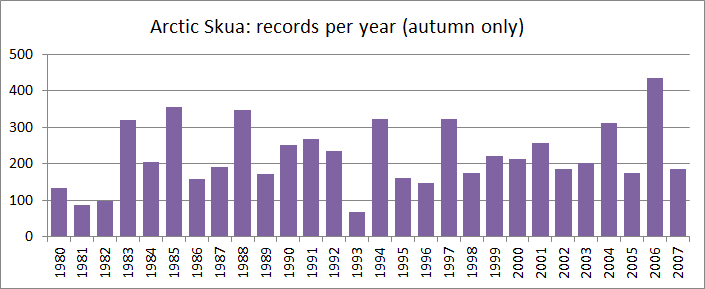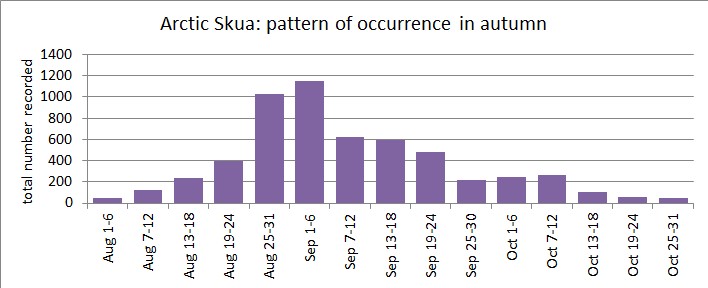Green Sandpiper - autumn
 Tuesday, July 19, 2011 at 8:24PM
Tuesday, July 19, 2011 at 8:24PM Tringa achropus
Females tend to leave the breeding grounds early, about a third of the way through June, small chicks being left in the care of the males. Autumn passage in Pembrokeshire has commenced from the 20th June and continued to October, representing 65 % of the annual totals. Earlier birds were recorded at the Teifi Marshes on the 13th June 1990 and 2nd June 1996. One individual was reported as summering at the Teifi Marshes in 1994, being present from May to August.
Conceivably some November occurrences could have been late migrants but October has been used as a cut off point in this assessment.
Autumn passage totals 1990 – 2006.
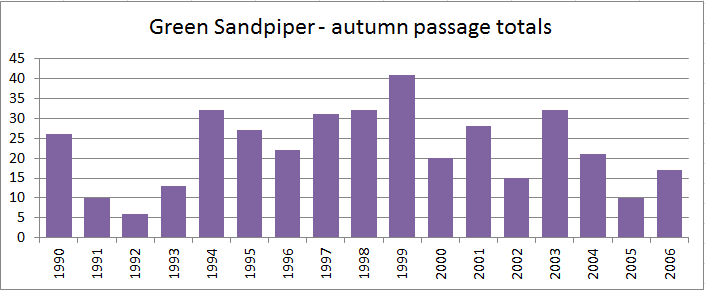
These are minimum figures, for no means have been found for evaluating turnover of individuals at each site. Most records refer to one to four birds per occasion but up to five have been recorded at Skokholm, Eastern Cleddau and Heathfield Gravel Pit, six at Skomer, Teifi Marshes and the Gann, seven at Westfield Pill and nine at Pembroke Mill Ponds.
Graham Rees.
(Covers records up to and including 2006).
 Autumn,
Autumn,  GHR,
GHR,  Wader,
Wader,  passage in
passage in  Green Sandpiper
Green Sandpiper 

